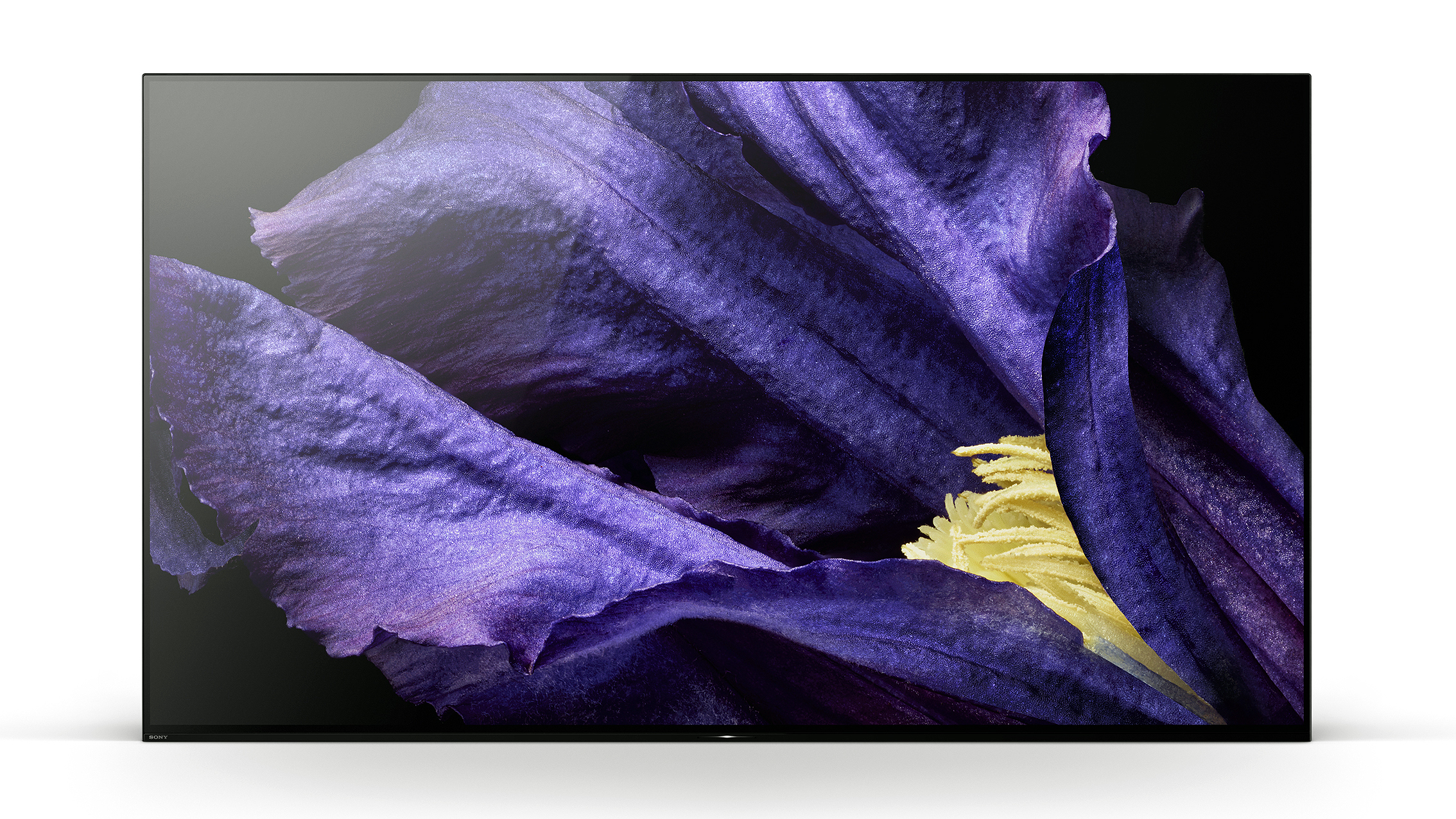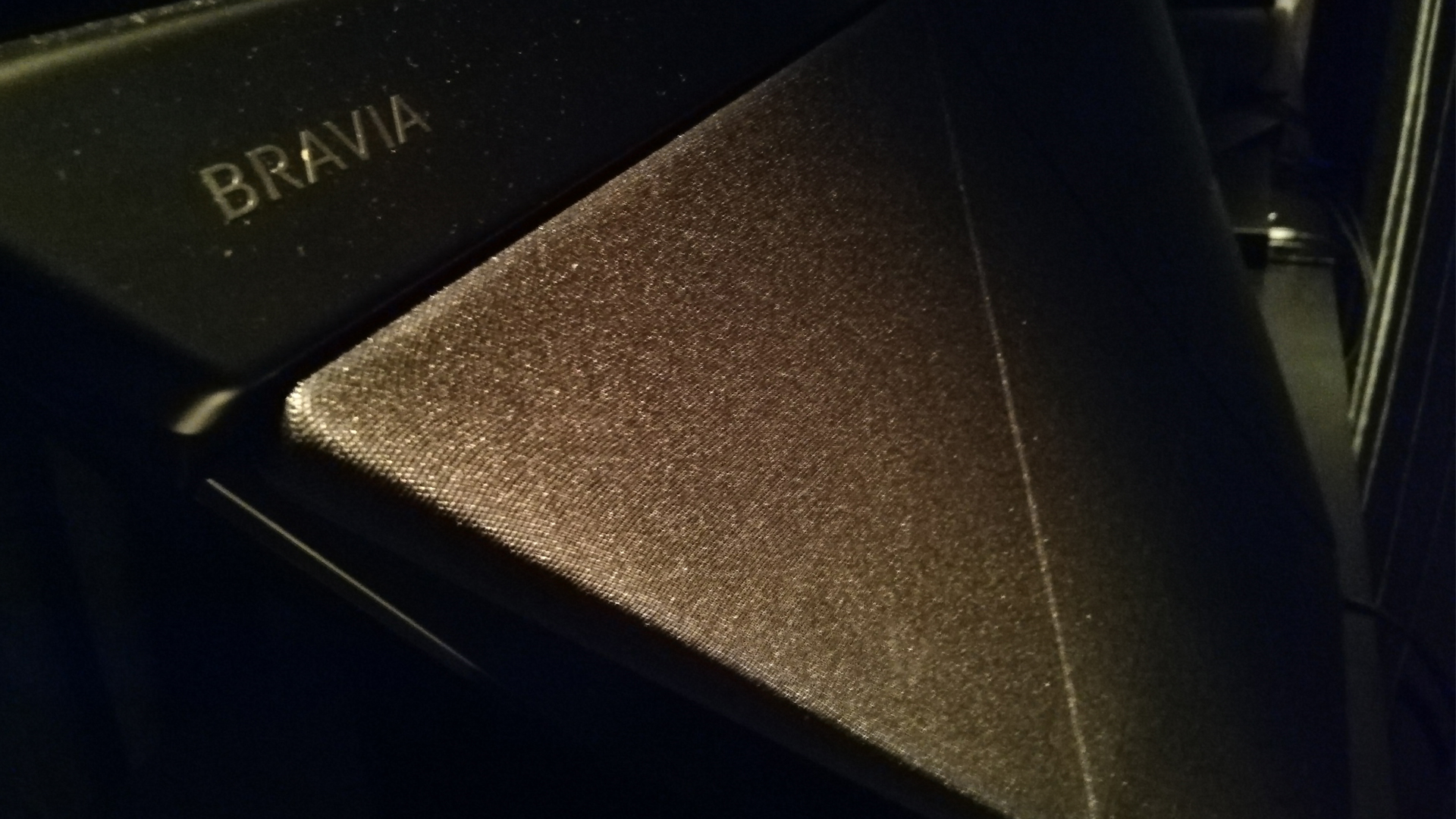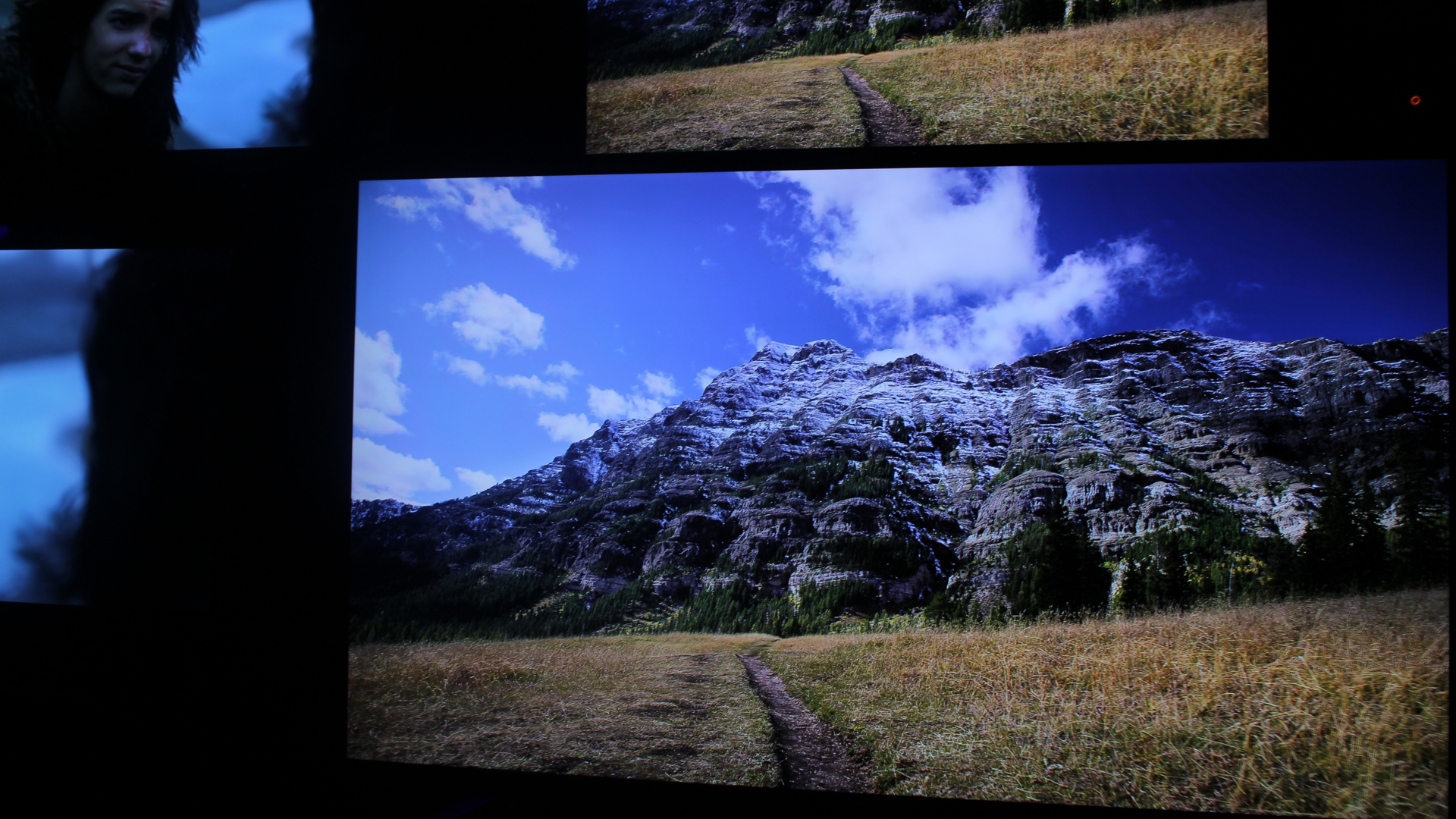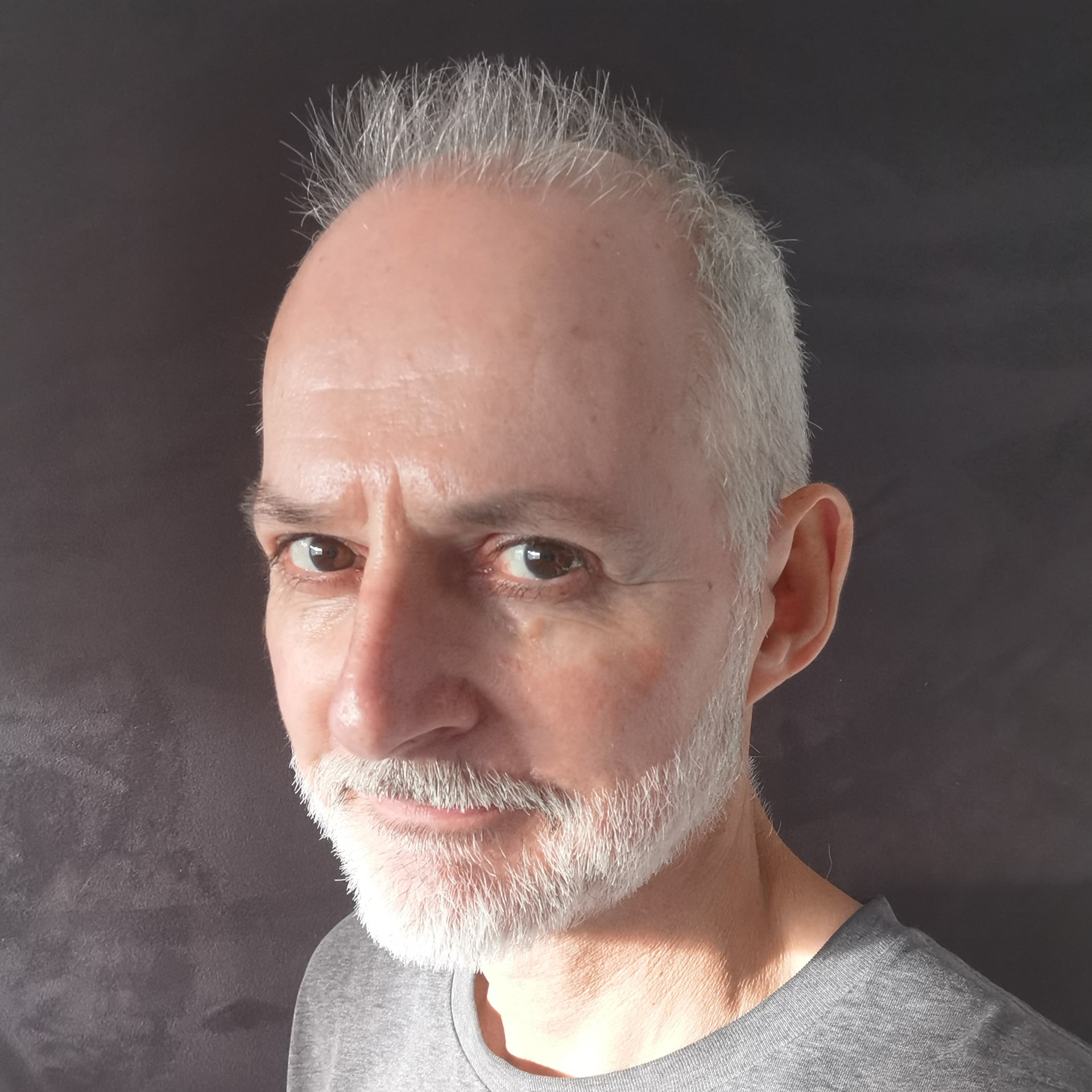Sony AF9 (KD-65AF9) hands on review: price, release date and a first look at the Master Series OLED 4K HDR TV
We got up close and personal with Sony's latest high-end display, and the OLED poster boy does NOT skimp on the wow factor

From what we've seen so far, this premium OLED will more than live up to Sony's grandiose 'Master Series' billing. We are gagging for a proper review model…
-
+
Powerful performance from a new X1 Ultimate picture processor
-
+
Great sound from Acoustic Surface Audio+
-
+
Oreo TV OS is the best Android smart TV offering yet
-
-
No Freeview Play
-
-
'Lean back' design is still a bit Marmite
Why you can trust T3
Sony is hoping to catch UHD lightning in a bottle twice with its upcoming AF9 OLED flagship. Known as the A9F in the US, confusingly, the model is the poster boy for the brand’s new Master Series of high-end displays, and it builds on the groundbreaking A1 with some intriguing new tech.
T3 had an opportunity to get up close with this 4K superstar at the brand’s global unveil, held recently in New York City. We peered and we prodded. You would have been proud. These are our first impressions…
- Hands on with the OLED Sony ZF9 (from the same event)
- The best TVs of 2018
- The best TV under £1000 - affordable 4K options
Sony AF9: release date, price and spec
• The AF9 range will be on sale in late September.
• 65-inch AF9, £3999
• 55-inch AF9, £2999
**Screen size:** 65-inches | **Other sizes available:** 55-inch | **HDR:** HDR10, HLG & Dolby Vision | **HDMI:** 4 | **USB:** 3 | **Dimensions:** TBC
Keep your eyes on the best Black Friday deals for possible discounts. You, er, may have to wait for BF 2019, though…
Get all the latest news, reviews, deals and buying guides on gorgeous tech, home and active products from the T3 experts
Sony AF9: steady styling

Cosmetically, the apple hasn't fallen far from the tree, and by 'tree' I mean the Sony A1 not this year's AF8. The AF9 adopts the same lean-back design as its ancestor, although it doesn’t tilt quite so far.
This is because the stand, which contains electronics and sound system, has been reworked. Given that this angled positioning initially proved a little divisive, a slightly more upright approach would seem a good choice. Of course, the screen can still be wall-mounted, if that’s your preference.
It’s actually on the rear that we see most of the obvious changes to the set, as the AF9 has an upgraded implementation of Sony’s Acoustic Surface Audio technology.
Charge of the chipsets

There are big changes when it comes to image processing. Out goes the fusty old X1 Extreme chipset and in come X1 Ultimate, boasting four times the muscle power.
Significantly, the new silicon has enabled two new image processing embellishments, Object-based Super Resolution and Object-based HDR Remaster.
Both allow individual images to be identified and enhanced in terms of detail, texture and contrast, all without over amplifying the entire screen. This opens the door to a new level of nuance and realism.
Is it the most advanced image processor on the planet right now? We’ll have to wait for it to land proper to find that out but there appear to be no changes when it comes to panel brightness or HDR performance, beyond the benefits of a new Pixel booster, which helps colour and contrast pop.
Sony has also been fiddling with its image presets. This is a slight cause for concern, as it’s previously led the pack when it comes to out of the box performance. Out goes the Cinema Pro mode, to be replaced by a new version of Custom. This comes pre-baked with Reference settings, but allows for users to tinker on top.
We’ll hold off on general comments on AF9 image quality, but the demos offered looked superb, with great near-black rendering (particularly a shadowed sequence from Crouching Tiger, Hidden Dragon) that appeared to match an OLED X300 Pro mastering monitor, but Sony didn’t offer enough material for us to make a qualitative judgement, and we certainly didn’t have access to any settings.
However, suffice to say that we’ve seen enough to be positively salivating at the prospect of getting an AF9 on the test bench, but there’s some bad news for gamers. When pushed, Sony admitted that there has been no improvement in image lag, which has been a weak point of recent Sony screens.
Audio impressions
The aforementioned Acoustic Surface Audio+ adds a third on-screen actuator to create a centre channel between the previous stereo configuration. Sony has also added a second bass driver, equivalent to a 3.2 sound system.
Rather neatly, these actuators have been incorporated into the lazy pedestal (which also houses the twin bass drivers), for a neater look. The design of the actuators themselves has also changed. They now (individually) sit in stiff aluminium baskets, offering greater rigidity.
The sound system also has a line input mode, which allows you to aggregate the set’s audio output as a centre channel. Sony illustrated this feature with a little help from The Greatest Showman, comparing the set as centre channel with a more conventional multi-speaker array.
If you can’t accommodate a centre channel speaker, for physical reasons, this would seem a clever compromise, although it's clearly not at all likely to work as part of a really booming, reference level home cinema system.
Binge-ready

Binge watchers will be excited at the prospect of a new Netflix Calibrated Mode. Exclusive (for now) to Sony, this image preset can only be applied within the TV’s Netflix app.
It supposedly optimises the screen for the best possible Netflix image, replicating Netflix mastering monitors. However, it poses more questions than it answers.
Having quizzed Sony at the launch, we were told the Netflix mode is not dynamically driven, but simply a confection of settings applied to anything streamed by Netflix, be it original content or licensed library fare. So is it really doing anything valuable or clever? We’ll have to wait and see when that review sample turns up.
Also intriguing is the news that the AF9 will offer Android’s new Oreo TV OS out of the box. We still haven’t had a good look at this, but what little we did spy at Sony’s Master series launch had minds put at ease. It looks to be a sizeable stepforward over the current Android TV platform.
Overall, the AF9 really seems to deserve its Master Series label. With solid improvements in audio and visual technology, it could be the 4K set to beat when it arrives in September.
Design appears largely unremarkable, although given that the preview space was interstellar black, finishing details may well have eluded us.
The set has a thin aluminium frame, supported by two widely spaced feet with integrated cable management. The aforementioned full array backlight adds extra depth.
Available in big (65-inches) and bigger (as the 75-inch KD-75ZF9), the ZF9 appears to use fundamentally the same direct lighting array as its lauded predecessor - at least that’s our assumption, as Sony was steadfastly tight lipped on the new screen’s actual specification.
We wouldn’t be surprised to hear that it’s got exactly the same number of dimmable zones as its predecessor.
So should an existing ZD9 owners trade-up, or potential Samsung Q9 buyers broaden their search? Possibly yay, possibly nay...
Everything hangs on the set’s visual performance. Able to extract minuscule detail from sources, as well as present smooth graduated colour, the set’s new X1 Ultimate picture processor looks to be something very special indeed.

Styling appears relatively unchanged from the ZD9
Popping visuals
Back at CES in January, Sony previewed an ultra-bright 8K 10,000 nit LED LCD display, but any hope that some of that astronomic luminosity would find a home in this new model has been dashed.
It appears Sony has bailed on the escalating HDR nit-war between brands.
While the ZF9 claims a modest bump in brightness, this has been used to improve off axis viewing, rather than boost specular highlights.
That’s not to say it can’t dazzle. Positioned alongside its Master Series AF9 stablemate in the darkened corners of Sony Hall, the ZF9 clearly had the edge in overall pop.
Brightly lit test footage looked gorgeous, with rich, saturated colours and punchy contrast.
Sony staged a number of demonstrations, comparing the new set with a Sony OLED BVM-X300 mastering display, and rival LED models. These controlled demonstrations should really be taken with a pinch of salt, however we saw enough to convince us that the ZF9 is a front line performer.
Despite its LED backlight, the set did a remarkable job of aping some characteristics of the Pro OLED display, although we are not fully convinced that’s what LED LCD buyers really want from their screens.

Simply the best SDR to HDR conversion out there
Back in black
The demonstrations did reveal a question mark over the set’s black level performance, however.
In a staged shootout with another brand, the ZF9 had problems presenting truly black letterbox bars.
Of course, this early sample may not be indicative of the main production run (from the NYC preview, our screen was being packed up and bundled off to appear centre stage at IFA, so there’s clearly not many to go around).
But it does raise questions, and undermines Sony’s ambition for this Master Series model to be used as a client monitor in post production facilities.
That said, superior motion handling, courtesy of X-Motion Clarity, and hands down the best SDR to HDR conversion out there, means this set could well end the year as one of our favourite LED LCD panels.
We’ll know more when we get our mitts on a review sample.
For over 25 years, Steve has been casting his keen eyes and ears over the best that the world of TV and audio has to offer. He was the creator of Home Cinema Choice magazine, and contributes to huge range of technology, home and music titles along with T3, including TechRadar, Louder, Ideal Home, the i newspaper, and more.

